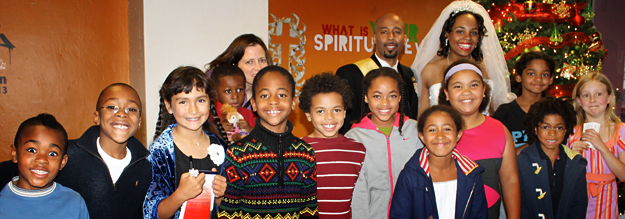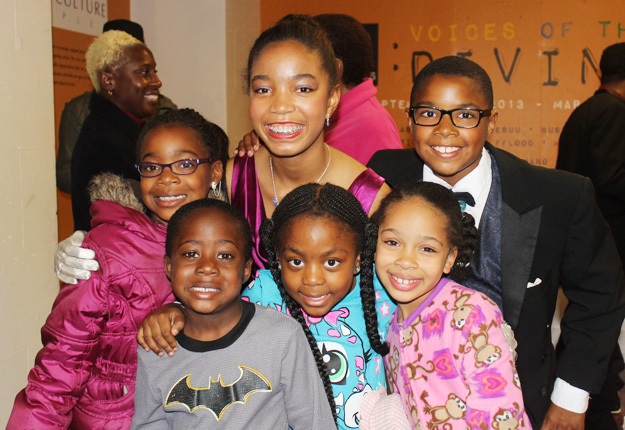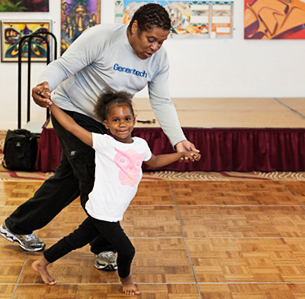Shake-It-Up
Shake-It-Up provides life-long learning and creativity while simultaneously building and strengthening reading and comprehension skills.
The Shake-It-Up program teaches literacy skills to students using theater games and drama techniques. This program addresses the educational needs of students in fun and creative ways, helping students develop a positive relationship with complex reading materials.
While hosting a youth drama workshop in 2004 (comprised with mainly African-American participants between the ages of 9-13), we discovered a serious problem. Many of the participants were struggling to read an age appropriate script. Simple words were not recognized, the participants lacked the skills to decipher the meaning, they easily became frustrated and lacked confidence in completing the assignment. It was at this point we realized there was a serious problem in the community, the reading skills of these youths were not up to standard.
“Black youth have higher rates of grade failure, drop out, suspension, and special education placement than do any other demographic group.”
– Mitchell Kapor Foundation Report 2007
“[Dropouts] is immediately relegated to the most punishing sector of the economy, where whatever low-wage jobs haven’t yet moved overseas are increasingly filled by even lower-wage immigrants. Dropping out of high school today is to your societal health what smoking is to your physical health, and indicator of a host of poor outcomes to follow, from low lifetime earnings to high incarceration rates to a high likelihood that your children will drop out of high school and start the cycle anew.”
– Nathan Thornburgh, DropOut Nation, Time Magazine: April 17, 2006: 32

The goal for Shake-It-Up is to develop a culture of African-American and Latino students to become avid readers and to discover enjoyment in the process. Our objective is to change the culture in specific communities towards achievement in education that is fresh and unique. We will achieve this objective by providing the programs directly to the schools and community centers in the neighborhoods; to approach the materials in a contemporary urban manner that is active and engaging; work with instructors and teaching artists that reflect the communities they serve in order to change the culture.
- Positive, meaningful and real to the participants
- Students are involved in cooperative (rather than competitive) experiences and thus promote skills associated with teamwork, self-confidence, and community involvement.
- Address complex problems in group settings rather than simplified problems in isolation.
- Offer opportunities to engage in problem-solving by requiring participants to gain knowledge of the specific context of their activity and community challenges, rather than only to draw upon generalized or abstract knowledge such as what comes from textbooks. As a result, learning offers powerful opportunities to acquire the habits of critical thinking, i.e. the ability to identify the most important questions or issues within a real-world situation.
- Provide deeper learning because the results are immediate and uncontrived.
As a consequence to the immediacy of the experience, Shake-It-Up is more likely to be personally meaningful to participants and to generate emotional consequence, to challenge values as well as ideas, and hence to support, social, emotional and cognitive learning and development.


No one expects much from Roger. He comes to class but doesn’t truly participate. Roger gets more attention and accolades from making the class laugh than achieving good grades. Roger hands in assignments late if they are handed in at all, and he does the bare minimum. But why would he want to spend time studying after school when most of his peers are hanging out and being free? Roger’s family consist of his mom and two other younger siblings. And while his mother wants the best for her son, she has everything on her shoulders and can barely keep things going. Right now Roger is in 4th grade; and as the academic requirements become more challenging, Roger is on his way to being left behind. This is the story of many young Black and Latino students in undervalued communities.
As the reading assignments get more challenging, Roger mentally checks out. He doesn’t want to admit to anyone that he doesn’t understand. Some of his classmates makes references or comments that Roger has no basis for understanding because he has not been part of the class. Roger feels left out of speaking about the subject matter because he doesn’t want to look foolish or say something stupid. Roger now realizes that he doesn’t have the cultural currency with his peers.



